
Q. I've been keeping saltwater fish for about five years, and have a problem that I've never encountered before. My 100-gallon aquarium contains a variety of sea plants, anemones, a sea apple, a parrotfish, a blue tang and several percula clownfish. I also have a 150-gallon aquarium that contains aggressive fish.
My problem is a purple- or wine-colored algae. It covers everything in the aquarium except the fish. A thin layer forms very quickly. As it gets thicker it becomes very stringy in spots, sending off filaments. I have been changing the water as fast as I can, but it grows faster than I am able to eliminate it. Please help!
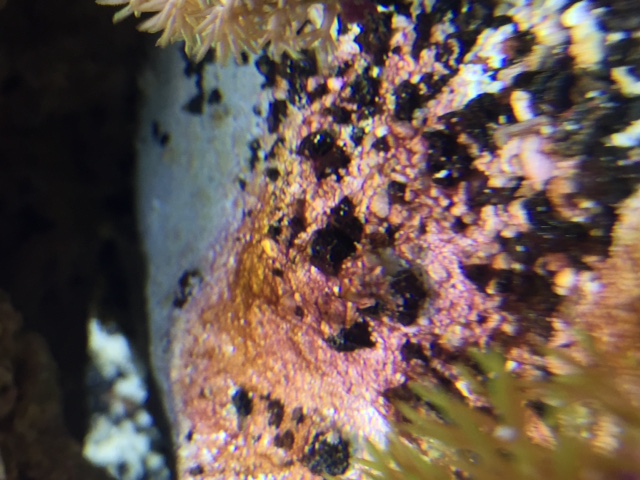
A. I can guarantee that you are not alone in your plight. Unfortunately, this is a common problem, especially in aquariums that have been operating for a while. Before addressing ways to curb the growth of this noxious organism, it's helpful to know what it actually is.
This red algae, which is often called "slime" algae by aquarists, is not really an algae at all, but rather, a cyanobacteria. Cyanobacteria are often considered to be the evolutionary link between bacteria and algae. Like the bacteria, they are prokaryotes — they lack membrane-bound organelles (true nucleus, mitochondria, chloroplasts).
Like algae — which are eukaryotes (having true nucleii) — they contain chlorophyll, but only one type (chlorophyll a), as well as other photosynthetic pigments, and they rely principally on photosynthesis for nutrition. They are often called blue-green algae, but to prevent confusion I will simply use the term blue-greens or cyanobacteria.
The blue-greens come in different forms — some are unicellular and planktonic, some are filamentous and some grow as slimy sheets on the bottom of our aquariums. Despite the name, only about half of these organisms are actually blue-green in color. Colors range from blackish green to blue-green and from orange-yellow to reddish brown.
The blue-greens in our aquariums are usually dark green, maroonish red or even black. These tend to grow in sheets on the live rock, the aquarium glass and crushed coral. They can even be found growing out of the water on the inside of the glass top, which is often wet because of the agitation at the water's surface. Even in a healthy reef aquarium they often grow on the base of leather corals. They are fast growing, and if conditions are right — or should I say wrong — they can take over an aquarium in days!
There are several interesting metabolic characteristics of this group that can help us to understand why it can become a problem in our aquariums. First, the photosynthetic pigments of blue-greens allow them to prosper in conditions that are not optimal for algae. For example, if we keep the light level in an aquarium low, we may not grow much algae, but still have a healthy growth of blue-greens.
Most algae photosynthesize best in the spectral region of wavelengths between 665 to 680 nanometers (nm). Blue-greens show high rates of photosynthetic activity at this spectrum, as well as between 560 and 620 nm. The reason is that they have chlorophyll, like true algae, as well as other pigments that absorb light effectively at the shorter wavelengths.
The lesson of this story is that light levels, as well as the spectrum of light, may affect the growth of blue-greens in your aquarium. If you have a persistent blue-green problem, you may want to increase the intensity and the spectral qualities of the light in your aquarium by trying different types of aquarium tubes. This latter comment would especially apply to any "full-spectrum" or color-enhancing tubes you may be using.
The second metabolic characteristic of blue-greens involves the utilization of organic substrates for nutrition. Many blue-greens assimilate organic carbon from the substrate, which they use for energy. This is why they are often most abundant in areas rich in organic matter.
For example, while snorkeling in a mangrove swamp I observed sheets of cyanobacteria growing over the muddy bottom. Mangrove swamps are extremely rich in micro- and macronutrients, which is one reason they are widely used as nursery areas for many types of marine organisms. This holds true in the aquarium as well — blue-greens usually become a problem when nutrient levels go unchecked.
This leads to the most important solution to controlling the growth of blue-greens in the aquarium. The primary cause of blue-greens in our aquariums is poor water quality. So, one of the easiest ways to keep pollutant levels down is to do frequent water exchanges (at least 20 percent a month). It's best to use deionized and/or reverse osmosis water for make-up water and for replacing evaporated water. Tap water often contains the very pollutants we are trying to eliminate, such as phosphates, silicates and nitrates.
One maintenance duty many aquarists neglect is to remove detritus whenever possible. Detritus consists of decomposing food and feces and the microorganisms associated with it. Heterogenic bacteria break down detritus, which in turn causes phosphates and nitrogen to be released into the aquarium water. Therefore, ridding the aquarium of detritus will help control the buildup of phosphates and nitrogenous wastes in your water.
If you have an undergravel filter, you need to use a gravel vacuum to suck detritus out of the substrate when you perform your monthly water exchanges. Also, you can facilitate the removal of detritus by placing live rock in a loose configuration so that you can get your siphon hose into the nooks and crannies. If you use live sand in your reef aquarium, you will need to use substrate-sifting gobies — the best is the orange-spotted sleeper (Valenciennia puellaris) — and pistol shrimp (Alpheus spp.) to keep the sand stirred and the detritus in suspension where it can be removed by external filters.
Dissolved organics, which also build up because of the breakdown of waste products, are another nutrient source for blue-greens, as well as other noxious algae species. An effective way of getting rid of dissolved organics is to use a good protein skimmer. This alone can successfully wipe out runaway blue-greens.
I have seen small internal skimmers get rid of slime algae in small aquariums. The biggest problem with the internal types is that they are intrusive and are often difficult to fit in the aquarium when the standard top is in place. You may have to remove the hinge between the two pieces of glass and overlap them so there is room behind the top. There are also some smaller external air-driven skimmers available that hang on the back of the aquarium and do a great job.
The most effective skimmers are the larger external types, but beware — many are prone to gushing water out of the collection cup and all over the floor if not adjusted correctly. Not all of us can afford, have room for or can convince our spouses to allow us to have a massive external protein skimmer. But, any skimmer is better than no skimmer at all. Remember, all skimmers require some maintenance, whether it is cleaning out a venturi valve or the skimmer's reaction chamber, or changing airstones.
One final note about skimming. I think you will have better long-term success if you start skimming immediately after setting up the aquarium rather than waiting until the dissolved organics begin to build up.
There are other factors that can encourage or discourage the growth of the red slime as well. For example, good circulation and oxygenation of the water can help prevent a blue-green invasion. This can be accomplished by installing powerheads in strategic locations in the aquarium.
If you are only using powerheads to run your undergravel filter and have a tight-fitting top on your aquarium, it is a good idea to use a pump and airstone to help oxygenate the water. Remember, surface agitation is the best way to facilitate gas exchange in an aquarium.
Things that can increase a blue-green problem include adding liquid invertebrate foods, overfeeding your fish, overstocking your aquarium or the excessive use of trace elements. In fact, if you have a blue-green problem, stop using trace elements until the cyanobacteria are brought under control.
Unfortunately, there are few fish or invertebrates that will successfully control the species of blue-greens we have problems with in our aquariums. I have had tangs, saltwater angelfish and blennies that browsed on the sheet-forming cyanobacteria, but they will rarely eradicate a "healthy" growth of it. Snails may islodge it, but do not eat it.
A short-term remedy for cyanobacteria is to add erythromycin to the aquarium. Add 200 milligrams per 10 gallons of water for two consecutive days. At this dosage it is usually effective at getting rid of the pest without having any deleterious effects on the invertebrates and nitrifying bacteria. Do this only when all other measures have been exercised without success. It is best to find the cause of the problem and fix it, rather than to try and temporarily extinguish the symptoms.
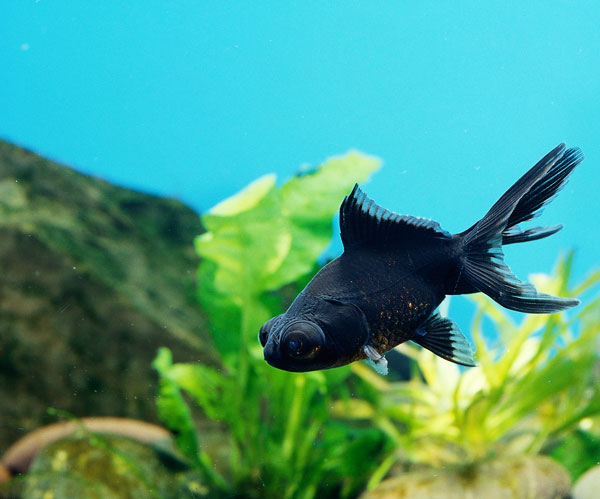 Fish and Fungus
Black Moor Q. I have two large black moor goldfish, one larg
Fish and Fungus
Black Moor Q. I have two large black moor goldfish, one larg
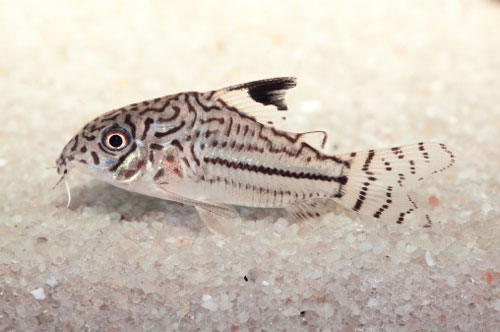 Keep Your Aquarium Clean With These Tank Tools
Success in maintaining a freshwater system takes applied kno
Keep Your Aquarium Clean With These Tank Tools
Success in maintaining a freshwater system takes applied kno
 Red Worms
Q. I’ve seen advertisements for red worms as a food for fish
Red Worms
Q. I’ve seen advertisements for red worms as a food for fish
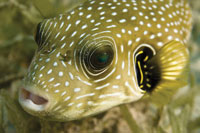 Pufferfish Teeth Care
Because their teeth are constantly growing, pufferfish
Pufferfish Teeth Care
Because their teeth are constantly growing, pufferfish
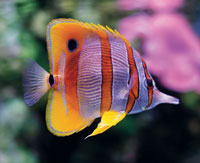 Aiptasia Anemone
Aiptasia Anemone
Copyright © 2005-2016 Pet Information All Rights Reserved
Contact us: www162date@outlook.com